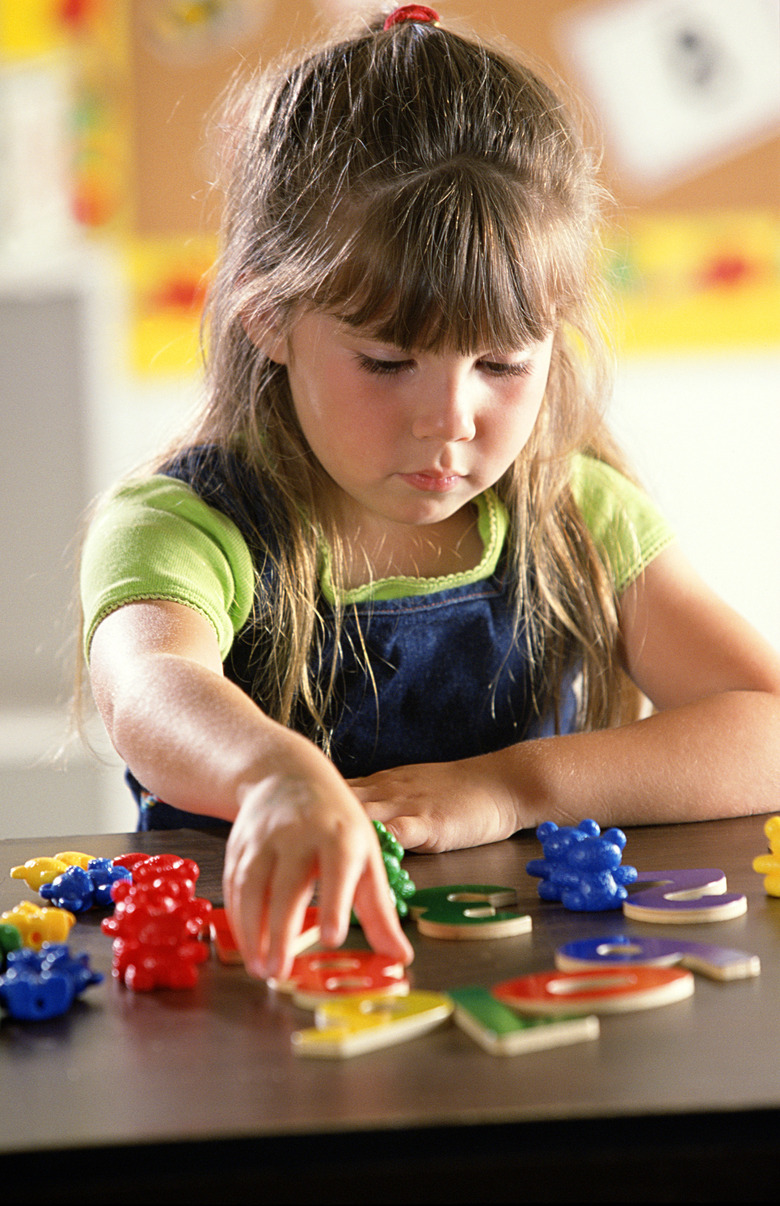First, Second And Third Grade Math Games
Playing math games in the first, second and third grade classrooms provides a means for students to establish a positive attitude toward math. The increased interaction between students allows them to learn from each other as they operate at different levels of thinking. Math games provide an opportunity for young students to develop and test problem-solving strategies.
Ensure a Successful Game Time
Ensure a Successful Game Time
Use game time wisely and plan to get the most benefit from math games. Determine a specific purpose for the game based on educational goals and make sure the game matches the objective. Allow no more than four players per game so that turns come quickly. The amount of time it takes to complete a game should be short so students do not get bored or frustrated. Use a few basic game structures and alternate math concepts for variety.
Board Games
Board Games
Create a simple board game by marking beginning and ending spaces and making a path of squares from one to another. Use cardboard, cardstock or poster board and laminate. Make several cards with math problems on them. Vary the problems according to grade level. For first graders, you can use simple addition problems, such as 3 + 2. For third graders, you can use multiplication. Do not put the answers on the cards. Place cards on the game board face down in a pile. Students take turns picking the cards and solving the problem. They can then move their playing piece the same number of squares as the answer. The first player to reach the end of the board wins.
Spinner Games
Spinner Games
Create a spinner and divide it into eight sections. On each of the sections draw a symbol that represents a number value. For instance, you can use a picture of a nickel to represent the number five or a picture of a die representing the number of dots showing. You can use a math problem, such as 3 + 4, or 6 x 2, or a fraction such as 4/2 to represent the number 2. Vary the pictures according to the grade level of your students. Give players a number grid with 100 squares, marked 1 through 100. Have players spin the spinner and mark off the number of squares on their grid represented by the symbol indicated by the spinner pointer. First player to mark off 100 squares wins.
Dice Games
Dice Games
A dice game can help students understand place value. Roll the dice and put them in order to make the highest number possible, using the numbers on the dice to represent place value. For instance, if you roll a 2 and a 3, your best answer would be 32. Using 3 dice, a roll of 6, 1 and 4 should give you 641, and so on. Write down your answer and pass the dice to the next player. After a series of four or five rounds, students add their scores. The player with the highest score wins. For variety, try to make the smallest number possible.
Cite This Article
MLA
McCarson, Debbie. "First, Second And Third Grade Math Games" sciencing.com, https://www.sciencing.com/first-second-third-grade-math-games-12318767/. 24 April 2017.
APA
McCarson, Debbie. (2017, April 24). First, Second And Third Grade Math Games. sciencing.com. Retrieved from https://www.sciencing.com/first-second-third-grade-math-games-12318767/
Chicago
McCarson, Debbie. First, Second And Third Grade Math Games last modified August 30, 2022. https://www.sciencing.com/first-second-third-grade-math-games-12318767/
